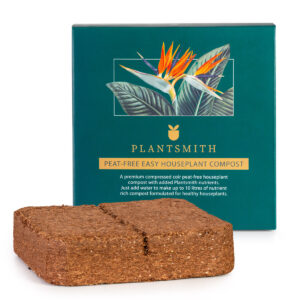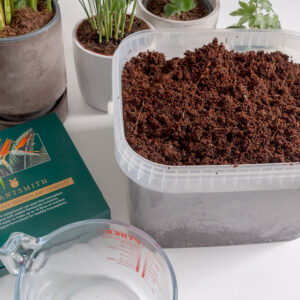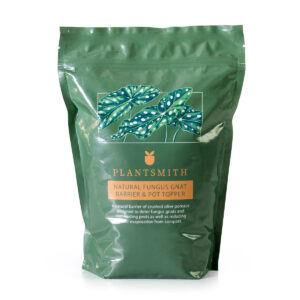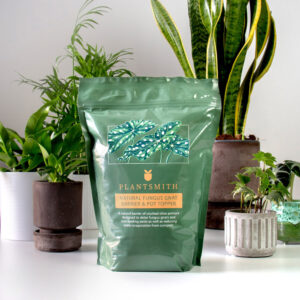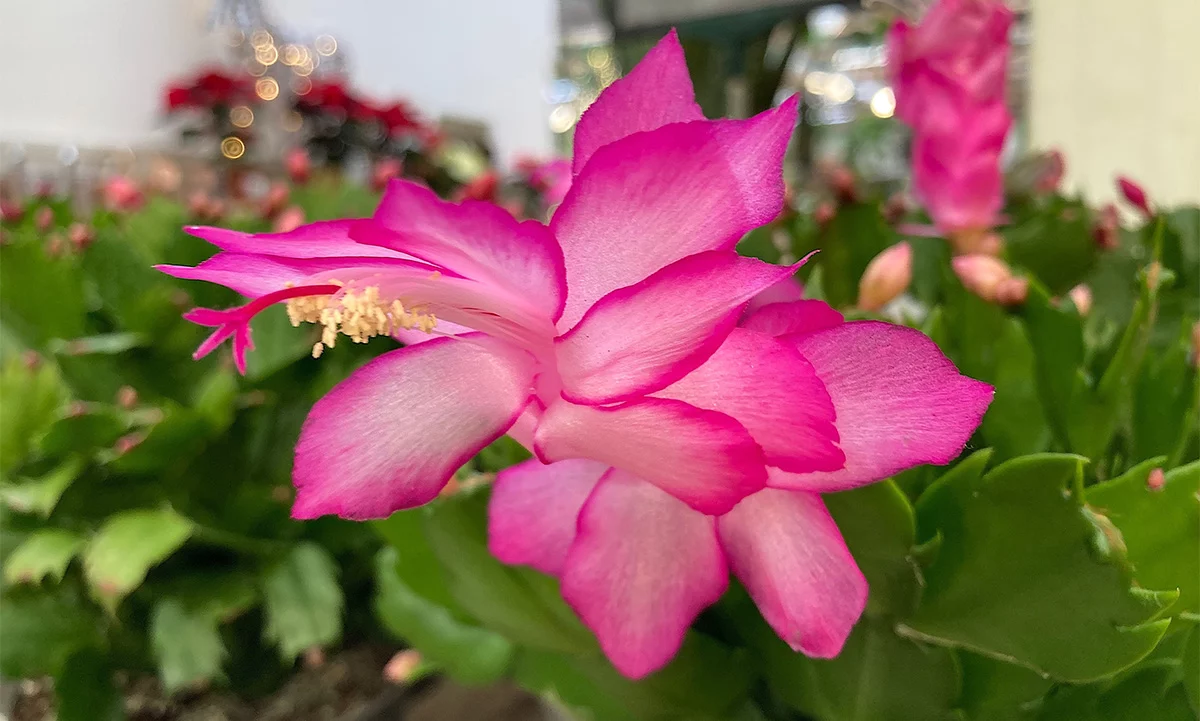There are a variety of different species of Schlumbergera, all of which have individual defining characteristics and flowering times. The three most common species sold in the UK are the Thanksgiving cactus, Schlumbergera truncata, Christmas cactus, Schlumbergera bridgesii and the Easter cactus, Schlumbergera gaertneri, formerly Hatiora gaertneri and they all have the same care requirements in our homes.
Schlumbergera have radiant, exotic bright flowers, ranging from red, pink to white, which are reminiscent of fuchsias and are a welcomed sight around the festive season.
Flowering
The Christmas Cactus has tubular flowers and rounded, smooth stems whereas the Thanksgiving cactus has spiky points like crab’s claws at the tips of stems. If you are thinking your Christmas cactus is flowering early it is most likely the Thanksgiving cactus, Schlumbergera truncata, which flowers from early November, a month earlier than Schlumbergera bridgesii, the December blooming Christmas Cactus. Both are beautiful.
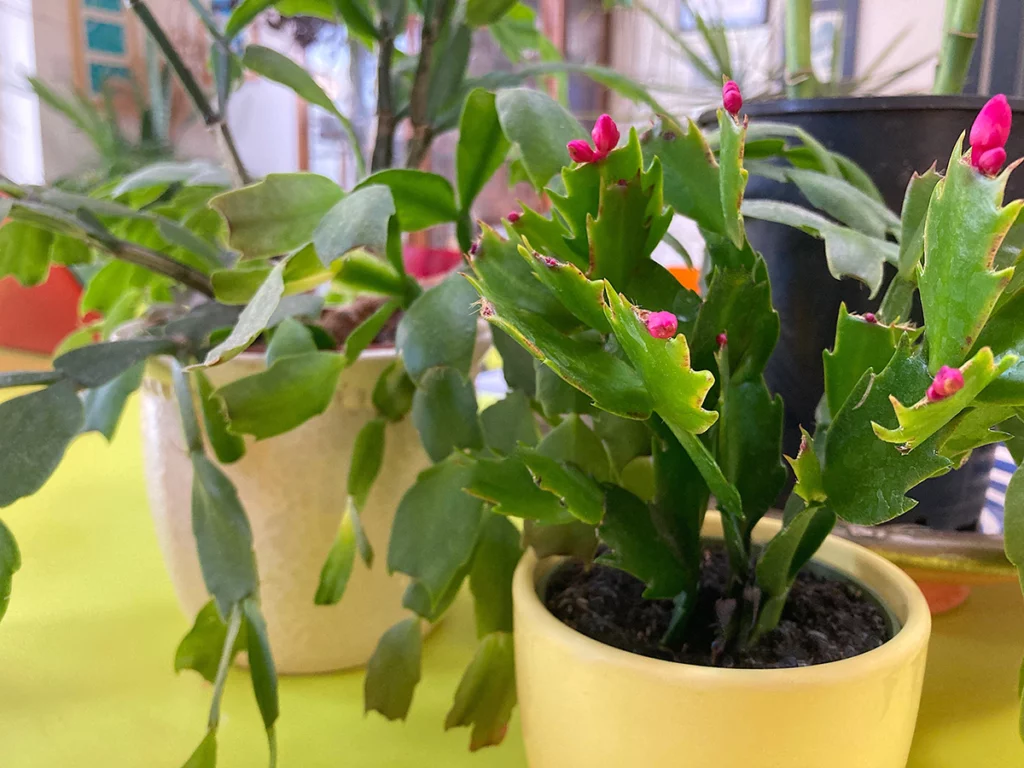
You will often find that it is the Thanksgiving cactus that is more commonly sold in shops mainly due to its earlier flowering.
Christmas Cactus bloom more prolifically if slightly pot bound so planting in a smaller pot should pay dividends and these exotic blooms will keep going well into January.
But if you are struggling to get your plant to bloom there are a few things you can do to force flowering; try and recreate its natural growing environment. Blooming happens once the plant comes out of dormancy so mimicking these conditions is a sure fired way to get a gorgeous display. Underwatering will also prevent flowering as well as too much light.
Make sure your plant gets around 14 hours of darkness a night, in a cool room and bring it out into indirect bright light in the day. Keep it well misted to increase humidity. Repeat this cycle for a few weeks and buds will break. Buds develop for about six weeks before flowering.
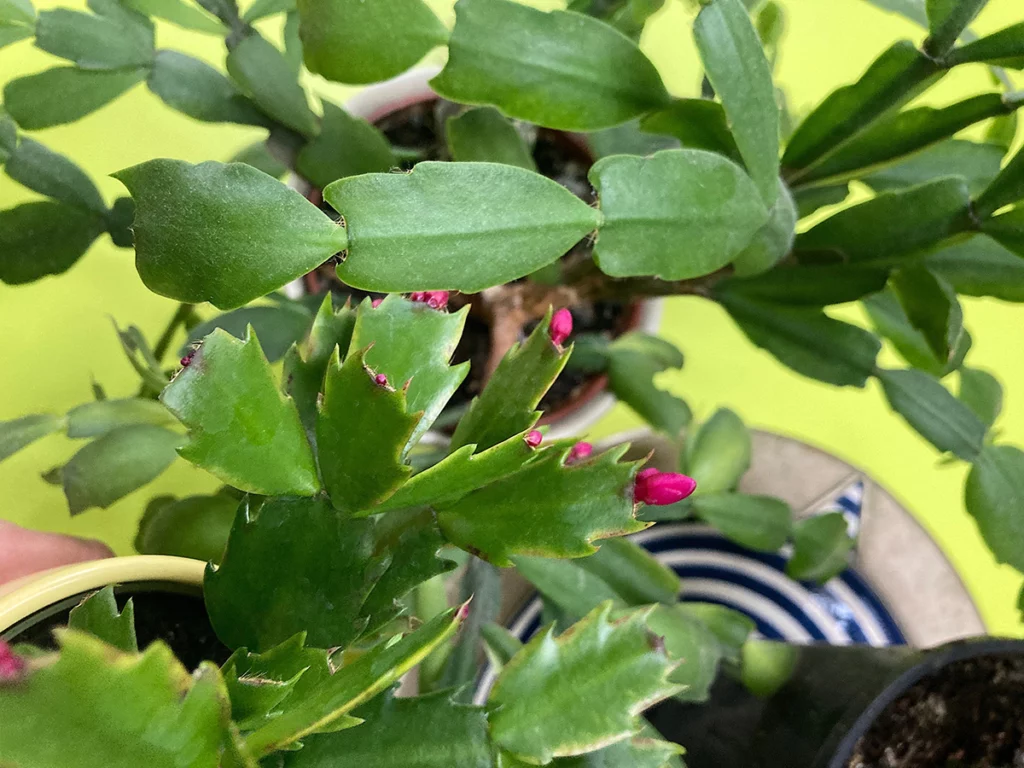
Light
Christmas Cactus love well-lit but semi-shady spots. Schlumbergera are epiphytes and in the wild they can be found clinging on to trees in the humid jungles of Brazil so strong direct sunlight is a no no but the warm, steamy environment of a bathroom with bright but indirect light is ideal to keep them healthy and promote flowering.
Water
Keep your Schlumbergera’s soil moist. As with many houseplants, let the soil dry out between waterings and then give them a good soak and allow the water to drain through the pot. Waterlogging can cause root rot.
Humidity is key so position Christmas Cactus away from air-drying radiators. Bathrooms and kitchens are naturally humid environments but give your plants an extra moisture boost with Plantsmith’s Perfecting Houseplant Care Mist. Humidity can also be raised by grouping pots together and popping a water-filled tray of pebbles under them.
Temperature
Our winter homes provide ideal growing conditions for Christmas Cactus. They are most happy in a room temperature around 20°C (68°F) but can seamlessly cope with fluctuations. Do not worry if you have to be sparing with the central heating this year.
Soil
Schlumbergera normally grow on trees in the wild so ensure your potting mix is light, sandy and free-draining so excess water can easily drain away. Mix together peat-free compost, horticultural sand, perlite for aeration, and coir. This will provide a good free-draining substrate. Alternatively, if you do not have the time to create your own potting mix, buy a cactus compost mix straight off the shelf.
Feeding
Winter is when Christmas Cactus are in full throttle so give them a weekly feed. During December they are on overdrive prolifically producing flowers so need a good boost to replenish all that spent energy.
Plantsmith’s Invigorating Cacti & Succulent Feed is the perfect balance of nutrients to give your plant everything it needs to thrive, encouraging healthy green stems, and bold, colourful flowers.
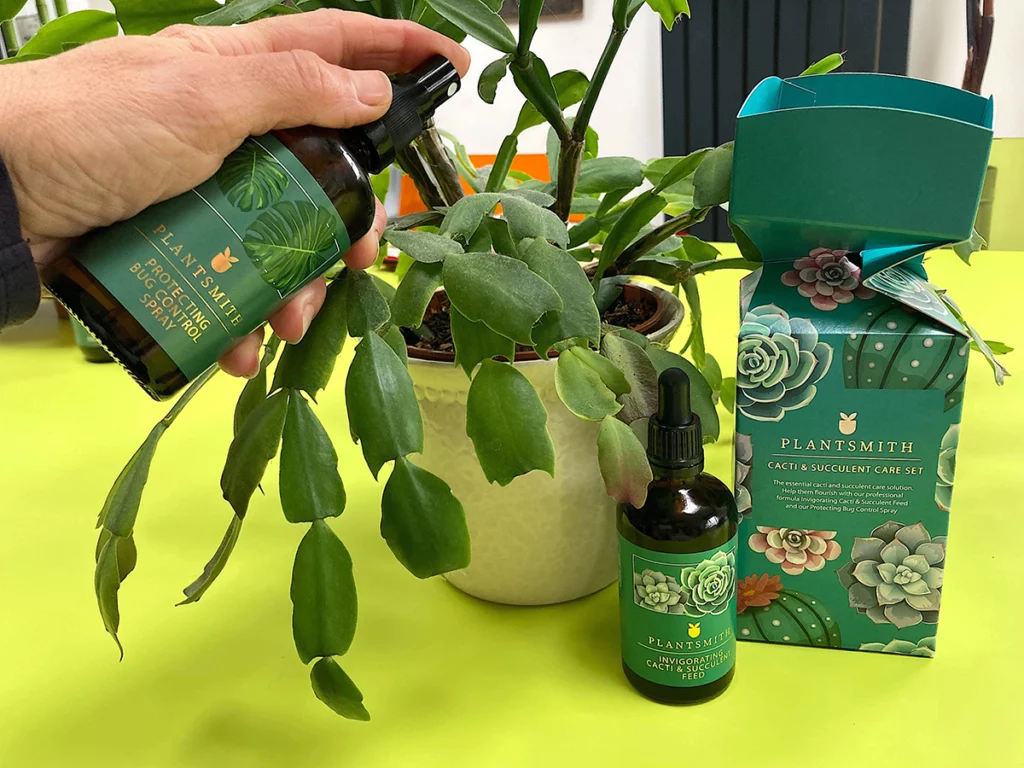
Propagation
The flattened stems are called phylloclades and can be fairly brittle and break off. Christmas cactus propagate very simply by division. Snap off a stem from the mother plant and leave the wound to dry up and heal over for a couple of days before pushing these stems into a pot of gritty compost. Keep moist but not waterlogged to avoid the stems rotting off.
Pests
Fungus gnats thrive on moist soil. If you see these tiny flies on the soil surface, reduce your watering schedule and Spray with Plantsmith Protecting Bug Control Spray. A gravel mulch on the pot’s surface may also help. You can also apply parasitic nematodes, Steinernema feltiae, as a biological control to try and quash the infestation. The nematodes are mixed in a watering can and then applied over the soil as part of your normal watering regime. Always read instructions carefully, and wear gloves when using.
Christmas cactus are not toxic to cats and dogs.
